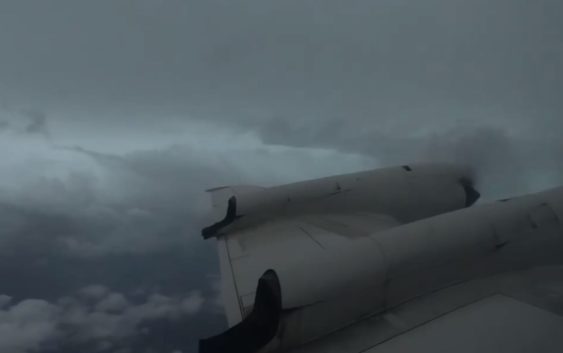- Fake job seekers are flooding the market, thanks to AI
- One set of evacuation orders lifted in Caldwell County after wildfire contained
- 'We gutted every building' | Chimney Rock rebuilding after Hurricane Helene
- 'We gutted every building' | Chimney Rock rebuilding after Hurricane Helene
- Debris from Hurricane Helene provides fuel, complicates containment for spring wildfires
KHOU 11 Meteorologist Chita Craft, photojournalist Ivan Gibson will fly into Ian on Hurricane Hunter

The brave crews fly into one of the most destructive forces of nature to measure hurricanes and help forecasters determine the intensity and likely landfall.
LAKELAND, Fla. — While millions of residents along Florida’s Gulf Coast evacuate to escape Hurricane Ian, a few brave pilots and their passengers will fly directly into the eye of the monster storm.
KHOU 11 Meteorologist Chita Craft and photojournalist Ivan Gibson will be onboard one of the Hurricane Hunters Wednesday as crews gather key data to help experts understand the structure of the storm and the winds that steer it. The information helps the National Hurricane Center develop computer models that predict the storm’s power and likely landfall.
NOAA’s Hurricane Hunter fleet includes two P-3 turboprop aircraft and a Gulfstream IV jet. As they fly through a storm, they can encounter extremely powerful winds over 150 miles per hour. And while they’re inside one of the most destructive forces of nature, they’re flying blind.
“Well, the best way I could describe it is it’s sort of like riding a roller coaster through a car wash because you can’t see anything out the windows in the eyewall,” Hurricane Hunter Flight Director Richard Henning said in an interview on the NOAA website.
The high-tech equipment includes a device that parachutes through the hurricane to the ocean surface while feeding back data on pressure, temperature, humidity and wind.
Henning said they fly twice a day.
“This airplane will just go day, night, day, night, day, night for six days in a row. And the missions last anywhere between eight and nine hours.”
According to Chita, the turboprops are a modified version of the C-130 planes used over wildfires.
“These planes are tough! They can fly for longer periods of time, and they can really take a beating!” Chita explained.
Fast facts about Hurricane Hunters
- NOAA’s WP-3D turboprop aircraft fly into the eye between 8,000 and 10,000 feet above sea level. At that level, they avoid turbulent air below and icing or hail above.
- The Gulfstream jet flies over and around the storm with a cruising altitude of 45,000 feet.
- They pass through the storm at least four times each mission.
- Hurricanes can be 50,000 feet high and around 125 miles across or more. The eye diameter varies and can be around 5 to 30 miles wide.
- The information provided by the Hurricane Hunters make forecasting 30% more accurate, according to NOAA.
- The aircraft are deployed from the NOAA Aircraft Operations Center in Lakeland, Florida, or from airports in the Caribbean if needed to reach developing storms.
- These critical missions are run by the 53rd Weather Reconnaissance squadron which has been flying into storms since 1944.
- NOAA calls their hurricane hunters Miss Piggy, Kermit and Gonzo after the Muppet characters.